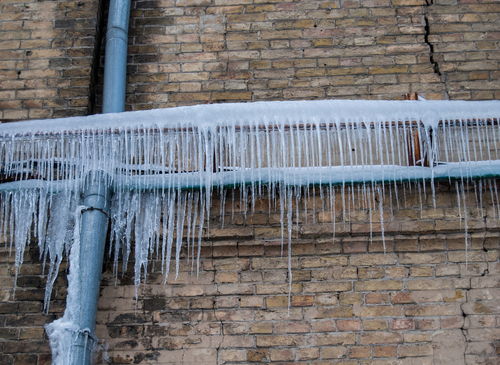Protecting Your Pipes from Cold Weather Issues: Critical Strategies
Protecting Your Pipes from Cold Weather Issues: Critical Strategies
Blog Article
How do you feel when it comes to How To Avoid Freezing Pipes?

Winter can ruin your pipes, especially by freezing pipelines. Here's how to prevent it from occurring and what to do if it does.
Intro
As temperature levels drop, the threat of icy pipes boosts, possibly resulting in expensive repair work and water damage. Comprehending just how to stop frozen pipelines is essential for property owners in cold environments.
Avoidance Tips
Shielding susceptible pipes
Wrap pipelines in insulation sleeves or make use of warmth tape to protect them from freezing temperatures. Concentrate on pipes in unheated or outside locations of the home.
Heating methods
Maintain indoor rooms effectively heated up, especially areas with plumbing. Open cupboard doors to permit cozy air to flow around pipelines under sinks.
Exactly how to identify frozen pipes
Search for decreased water circulation from faucets, unusual odors or noises from pipes, and visible frost on revealed pipes.
Long-Term Solutions
Structural changes
Think about rerouting pipes far from outside wall surfaces or unheated areas. Include additional insulation to attics, cellars, and crawl spaces.
Updating insulation
Invest in high-grade insulation for pipelines, attic rooms, and walls. Correct insulation assists preserve consistent temperatures and lowers the risk of frozen pipelines.
Securing Outdoor Pipes
Garden tubes and exterior taps
Detach and drain garden pipes before winter. Install frost-proof spigots or cover exterior taps with insulated caps.
Recognizing Frozen Pipes
What triggers pipelines to ice up?
Pipes freeze when revealed to temperature levels below 32 ° F (0 ° C) for extended durations. As water inside the pipelines ices up, it increases, putting pressure on the pipe wall surfaces and possibly creating them to rupture.
Threats and damages
Icy pipelines can result in supply of water disturbances, property damage, and costly repair work. Burst pipelines can flood homes and trigger substantial structural damages.
Indications of Frozen Piping
Identifying frozen pipelines early can prevent them from rupturing.
What to Do If Your Pipelines Freeze
Immediate actions to take
If you believe frozen pipelines, maintain taps open to ease pressure as the ice thaws. Utilize a hairdryer or towels taken in warm water to thaw pipelines slowly.
Conclusion
Stopping icy pipes needs proactive steps and fast actions. By recognizing the reasons, indicators, and preventive measures, homeowners can protect their pipes during winter.
5 Ways to Prevent Frozen Pipes
Drain Outdoor Faucets and Disconnect Hoses
First, close the shut-off valve that controls the flow of water in the pipe to your outdoor faucet. Then, head outside to disconnect and drain your hose and open the outdoor faucet to allow the water to completely drain out of the line. Turn off the faucet when done. Finally, head back to the shut-off valve and drain the remaining water inside the pipe into a bucket or container. Additionally, if you have a home irrigation system, you should consider hiring an expert to clear the system of water each year.
Insulate Pipes
One of the best and most cost-effective methods for preventing frozen water pipes is to wrap your pipes with insulation. This is especially important for areas in your home that aren’t exposed to heat, such as an attic. We suggest using foam sleeves, which can typically be found at your local hardware store.
Keep Heat Running at 65
Your pipes are located inside your walls, and the temperature there is much colder than the rest of the house. To prevent your pipes from freezing, The Insurance Information Institute suggests that you keep your home heated to at least 65 degrees, even when traveling. You may want to invest in smart devices that can keep an eye on the temperature in your home while you’re away.
Leave Water Dripping
Moving water — even a small trickle — can prevent ice from forming inside your pipes. When freezing temps are imminent, start a drip of water from all faucets that serve exposed pipes. Leaving a few faucets running will also help relieve pressure inside the pipes and help prevent a rupture if the water inside freezes.
Open Cupboard Doors
Warm your kitchen and bathroom pipes by opening cupboards and vanities. You should also leave your interior doors ajar to help warm air circulate evenly throughout your home.

We had been shown that write-up about Helpful Tips to Prevent Frozen Pipes this Winter through a good friend on a different web property. So long as you liked our post plz consider to share it. I praise you for your time. Come back soon.
Contact Us Report this page